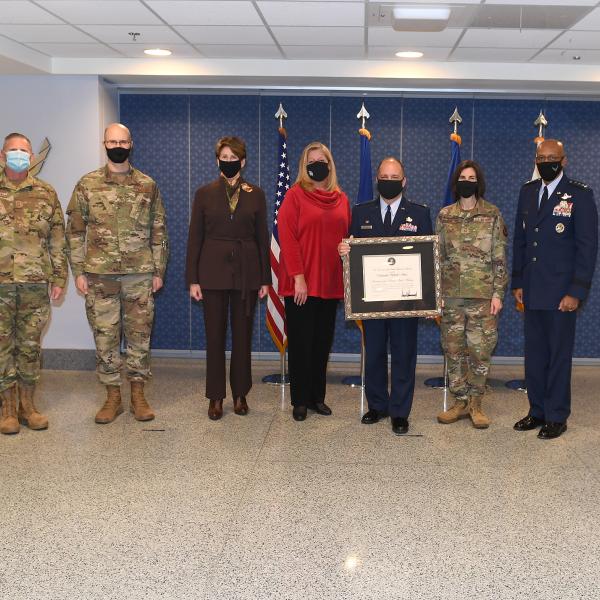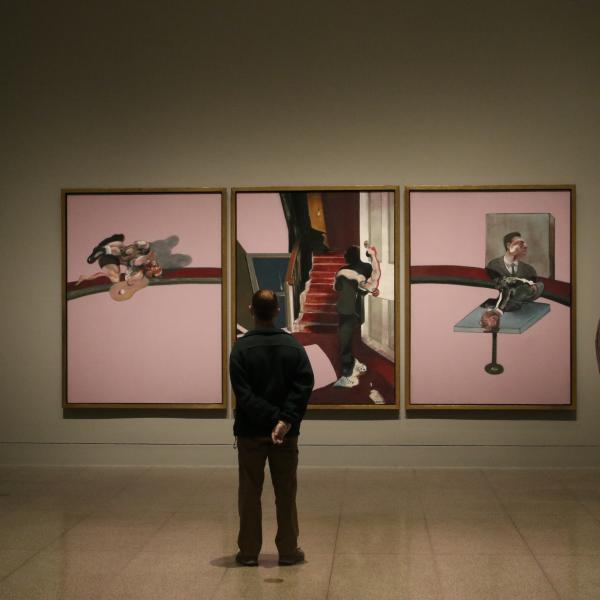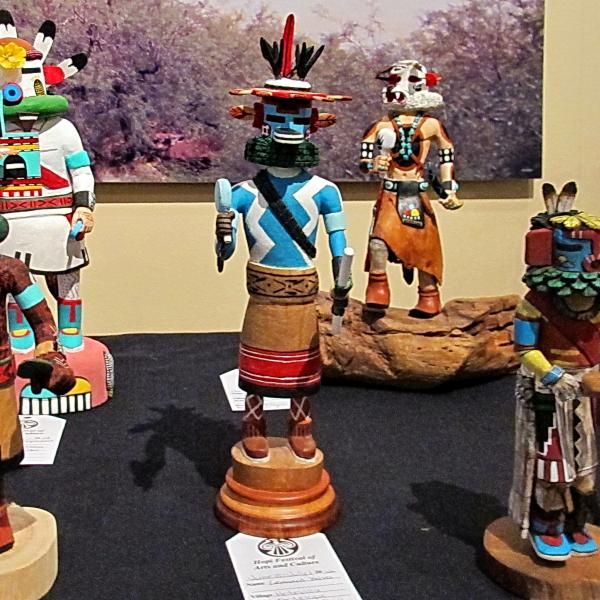Building Hope

The leadership team of MASS Design Group. Photo courtesy of MASS Design Group
Before March 2020, the major design concerns of most arts organizations had to do with (surprise!) art, and how to best experience it. Lighting, acoustics, visibility of a performance or art object, a space’s aesthetic appeal—these were all critical elements in creating a successful arts venue.
But with the onset of the COVID-19 pandemic, healthcare concerns have become a top priority for every built space in the nation, arts organizations included. How can indoor environments, which we now know can promote COVID-19 transmission, stay true to their original purpose while also protecting public health?
“COVID-19 reveals what many of us have long known: that buildings shape our health and our ability to access health every day,” said Michael Murphy, founding principal and executive director of the Boston-based MASS Design Group, a National Endowment for the Arts CARES Act grantee. “Architecture can play a unique role in contributing to a cure: if spaces can be purposefully designed, they can assist in the prevention, containment, and treatment of infectious disease, including COVID-19.”
MASS Design Group—MASS stands for “Model of Architecture Serving Society”—was founded just over a decade ago as a 501(c)3 nonprofit organization. Initially focusing on healthcare settings, such as the Butaro District Hospital in Rwanda, the practice has since expanded to work in education, affordable housing, and memorials, such as the National Memorial for Peace and Justice in Montgomery, Alabama, which is the nation’s first national memorial to commemorate victims of lynching. As Murphy explained, the group’s mission is to “research, build, and advocate for architecture that promotes justice and human dignity. We believe in expanding access to design that is purposeful, healing, and hopeful.”
When the pandemic struck, MASS Design Group transitioned to telework, video conferencing, and virtual workshops, just like thousands of other offices around the world. But even as the team adjusted to its own new normal, it began to look outward, and started thinking about how it might help other organizations adapt to the COVID-19 era and prompt them to rethink how their spaces could promote and protect the health of their communities.

MASS Design Group has long incorporated elements that mitigate airborne disease transmission into its designs, including at the 150- bed Butaro District Hospital in Rwanda, which employs natural cross-ventilation. Photo by Iwan Baan
With its history in healthcare, and with support from a CARES Act grant, MASS Design was well-positioned to take on a leadership role in helping the architecture and design fields begin to incorporate public health thinking. “The generous support and funding from the [National Endowment for the Arts CARES Act grant] helped us to mobilize our expertise by creating a COVID-19 Design Response team to share strategies when retrofitting spaces for infection control,” said Murphy. “After studying the relationship between architecture and human health for a decade, we believed we had something meaningful to contribute.”
As part of the COVID-19 Design Response efforts, MASS Design began to consolidate and disseminate a decade’s worth of lessons the organization had learned from various healthcare projects. As Murphy noted, what good is accumulating expertise if it’s not to be in service, whether to a client or the global community?
Working with design and healthcare leaders who helped guide the initiative, MASS Design also studied spaces throughout the country where social distancing was a challenge. “Prisons in particular were especially vulnerable, with 86 of the 100 largest outbreaks [taking place] within prisons and jails throughout the U.S.,” said Murphy. “These are environments where social distancing is very difficult, and the guards and people who have been incarcerated are in tight, poorly ventilated spaces for large periods of time. We looked at homeless shelters, hospitals, schools, senior housing spaces, as well as restaurants and hotels.”
As a result of the Design Response team’s ongoing work, MASS Design has published a collection of case studies, best practices, and lessons learned, all of which are available on the organization’s website, free of charge. The compendium has become a critical resource for the design field, both for practitioners retrofitting existing buildings and those contemplating construction of new spaces. The Wall Street Journal Magazine and the New York Times have both recently featured MASS Design in recognition of its work to re-envision buildings for COVID times.
“The design of our spaces has the power to hurt us or to keep us safe,” said Murphy. “From floor layouts, to the choice of materials, to the circulation of air, every decision we make matters. The COVID-19 pandemic has profoundly changed our shared perception of what is a safe, healthy space, and demands that we re-imagine how and where we gather in public.”

Designed by MASS Design Group, the National Memorial for Peace and Justice in Montgomery, Alabama—the first national memorial to commemorate victims of lynching—has modified its space to address COVID-19 by installing UV lights to kill bacteria and introducing “no touch” options for certain interactive exhibits, among other safety measures. Photo courtesy of flickr user Ron Cogswell
When discussing arts organizations, Murphy acknowledged that it might be some time before audiences can safely gather and experience art as they had before, particularly when it comes to the performing arts. However, he believes that structural improvements to venues, paired with thoughtful use of virtual spaces, could be a recipe for long-term success.
“Looking forward, our recommendations for arts organizations could include providing an airflow strategy that protects staff and visitors, while simultaneously emphasizing a shift towards virtual content production and decentralized educational programming,” he said, noting that outdoor public spaces should also be explored for site-specific activities. “We recognize that asynchronous content can never replace the importance of gathering together in-situ to experience art. However, virtual content does create an opportunity to reach new audiences.”
Engaging audiences virtually is something MASS Design has already put into practice itself. As part of the organization’s CARES Act award, the group was also able to move forward with its 2019 Our Town grant from the Arts Endowment, which involves adapting a decommissioned underground cistern in Murphy’s hometown of Poughkeepsie, New York, into a community cultural facility, in partnership with the City of Poughkeepsie. “The funding helped us continue community conversations about the project, which take more planning without being able to easily meet in person during the pandemic,” Murphy said. Like all of the organization’s projects, the Our Town project aims to heal, in this case by redressing negative consequences of past urban renewal efforts, many of which aggravated Poughkeepsie’s racial and economic divisions.
As the nation continues to weather the coronavirus pandemic, Murphy is hopeful that architecture and design will be recognized—and utilized—as powerful forces in helping society confront and overcome public health and other social challenges, both today and in the future.
“We know that buildings can hurt or they can heal, but architecture is often relegated as a passive backdrop,” Murphy said. “If design is deployed as an active agent in the fight against the coronavirus pandemic, we can recapture trust over our public spaces and solve problems. The spatial choices we make today, during this emergency, might make or break our ability to survive both this crisis and the next one.”





